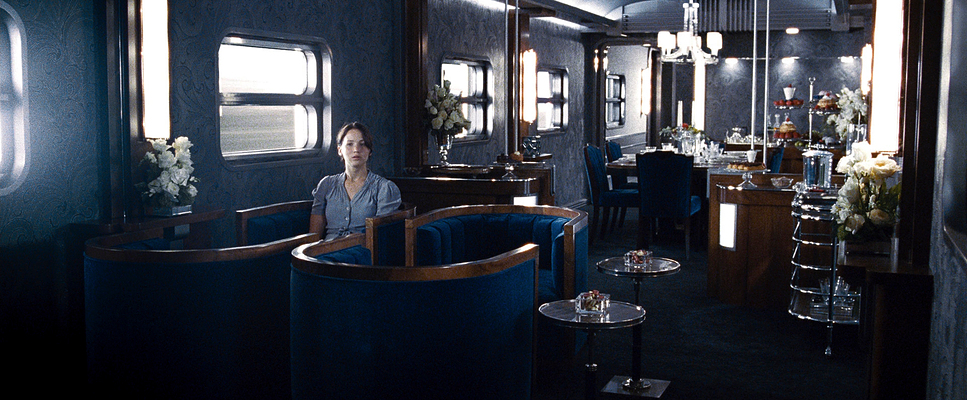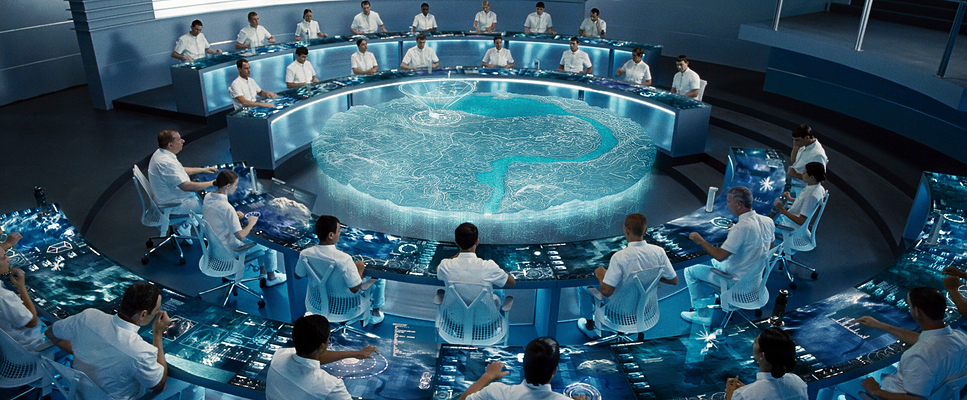My perspective is deeply informed by my hands-on experience in the industry, and one of the films that deeply inspires me is The Hunger Games, directed by Gary Ross.
The movie captivated audiences with its gripping narrative, but its cinematography stood out as a crucial element that elevated its storytelling. From the oppressive desolation of District 12 to the opulent artificiality of the Capitol, the cinematography masterfully immerses viewers into the world of Panem. In this article, I share my insights and analysis of how the cinematography of The Hunger Games contributes to its emotional and narrative depth.
Cinematography Analysis Of Hunger Games
About the Cinematographers

The Hunger Games owes its visual distinction by cinematographer: Tom Stern. Tom Stern, known for his gritty and realistic aesthetic, shot the first film. He brought a rawness to District 12 and the arena that mirrored the harshness of the narrative.
His work is a testament to the importance of visual storytelling in creating worlds that feel both believable and thematically resonant.
Inspiration for the Cinematography of The Hunger Games

The visual style of The Hunger Games draws from dystopian aesthetics and war-torn environments. Suzanne Collins, the author, was inspired by the numbing impact of violence in mass media, and this theme informed the cinematography. The districts were depicted with desaturated colors and handheld camera techniques, evoking a raw, documentary feel.
The Capitol, on the other hand, is a visual juxtaposition. It’s inspired by high-fashion photography and baroque opulence, showcasing its detachment and decadence. These opposing styles highlight the socio-economic divide between the districts and the Capitol, a central theme of the story.
The filmmakers also took cues from cinema verité. The handheld camerawork during the games reflects the chaos and unpredictability of battle, while the controlled, smooth shots in the Capitol signify its calculated dominance.
Camera Movements

One of the most striking aspects of the cinematography is its use of contrasting camera movements. In the arena, handheld shots dominate, immersing viewers in the chaos of the games. This technique captures the raw, unfiltered nature of survival, making the audience feel the stakes.
Conversely, in the Capitol, the camera employs smooth, deliberate movements, such as Steadicam and tracking shots. This creates a sense of control and composure, reflecting the Capitol’s rigid order and dominance over the districts. This contrast visually reinforces the disparity between the two worlds and adds another layer of depth to the narrative.
Compositions
The compositions in The Hunger Games are meticulously crafted to emphasize both intimacy and grandeur. In District 12, tight framing and cluttered backgrounds evoke a sense of suffocation and struggle. These compositions make the audience feel the constraints of life under oppression.
On the other hand, the Capitol employs symmetrical compositions and wide-angle shots to convey perfectionism and excess. Characters are often dwarfed by the grandeur of their surroundings, emphasizing their insignificance within the Capitol’s power structure. The framing choices not only enhance the visual appeal but also subtly underline the socio-political commentary.
Lighting Styles

Lighting is another crucial aspect of the Hunger Games’s cinematography. District 12 is lit with naturalistic, muted tones, creating a bleak and somber atmosphere that reflects its harsh living conditions. In contrast, the Capitol glows with artificial, high-key lighting, drenched in vibrant hues to accentuate its theatricality and superficiality.
In the arena, the lighting is dynamic and unpredictable, mirroring the tributes’ vulnerability and the volatile environment. Shadows are strategically used to heighten tension, while moments of harsh sunlight emphasize exposure and danger. This deliberate manipulation of lighting enhances the emotional texture of the film.
Lensing and Blocking

Lensing plays a significant role in defining the emotional and visual tone of The Hunger Games. In the districts, wide-angle lenses are used to capture the vast yet oppressive environments, emphasizing the enormity of the characters’ struggles. In the arena, longer lenses compress the space, creating a sense of claustrophobia and heightening the tension of close-quarters combat.
Blocking, too, is used effectively to tell the story. In scenes of conflict, characters are often positioned at varying distances, symbolizing isolation and vulnerability. Meanwhile, in the Capitol, the blocking feels choreographed and theatrical, reinforcing the idea of life there as a performance.
Color Grading

As a colorist, I find the color grading of The Hunger Games exceptionally compelling. Each location has a distinct palette that supports the narrative. The districts are washed in desaturated tones—grays, browns, and muted blues—highlighting the bleakness of life under oppression.
The Capitol explodes with saturated, vibrant colors, showcasing its extravagance and detachment from reality. In the arena, earthy greens and browns dominate, capturing the natural environment while hinting at the dangers lurking within. Subtle shifts in color tones mark emotional moments: cooler tones underscore despair, while warmer hues symbolize fleeting hope or connection.
This thoughtful approach to color grading adds a layer of subconscious storytelling, allowing viewers to feel the emotional undertones without overt exposition.
Technical Aspects
The technical choices in The Hunger Games were critical to achieving its distinct look. The film utilized the ARRI Alexa digital cameras, known for their versatility and ability to handle both low-light and high-contrast scenarios. This technology allowed for seamless transitions between the naturalistic lighting of the districts and the saturated brilliance of the Capitol.
The integration of practical and CGI effects was another strength. From fire and mutts to holograms in the arena, the visual effects felt grounded and immersive, ensuring the story’s fantastical elements remained believable.
Conclusion
The cinematography of The Hunger Games is a testament to the power of visual storytelling. Through thoughtful choices in camera movement, composition, lighting, lensing, and color grading, the film immerses viewers in a world that feels both real and thematically rich.
As a filmmaker and colorist, I am deeply inspired by how these visual techniques enhance the narrative. The Hunger Games demonstrates how cinematography can transcend mere aesthetics, becoming an integral part of the storytelling process. It serves as a reminder that cinema, at its best, is a harmonious blend of art and emotion, capable of leaving a lasting impact on its audience.